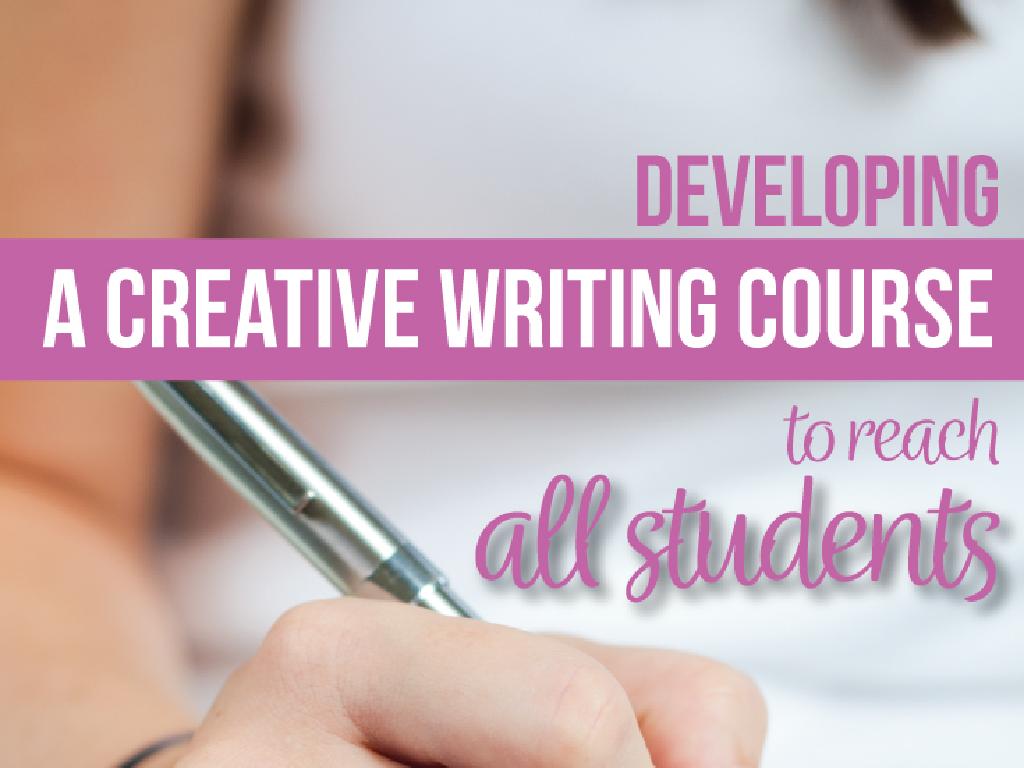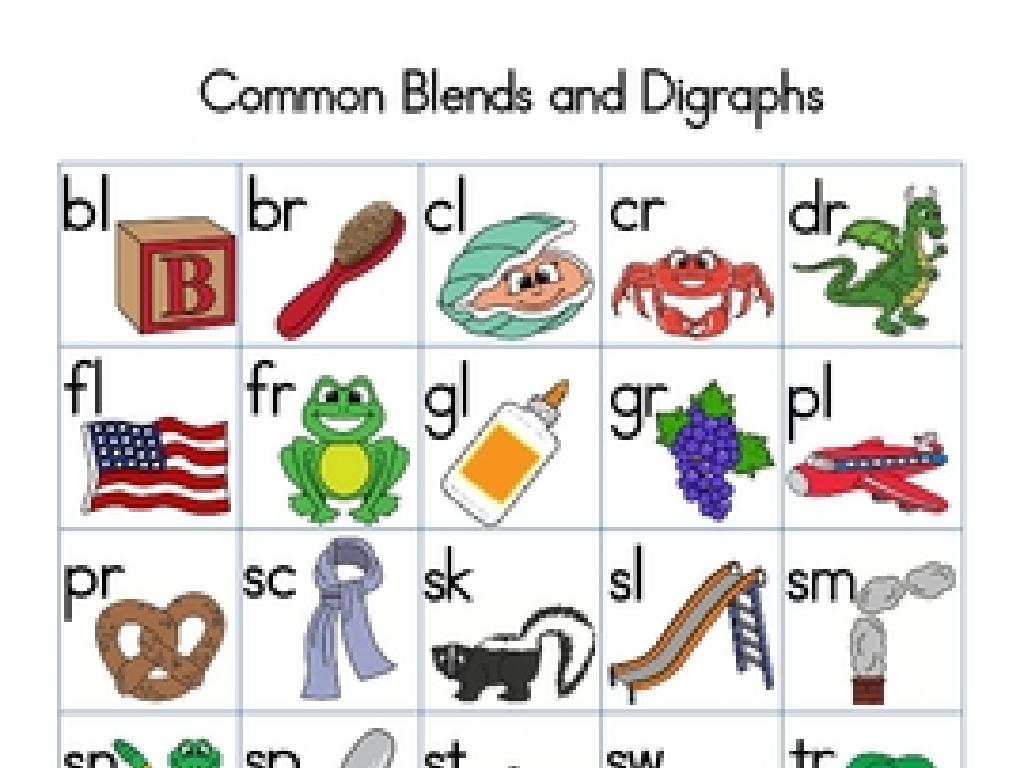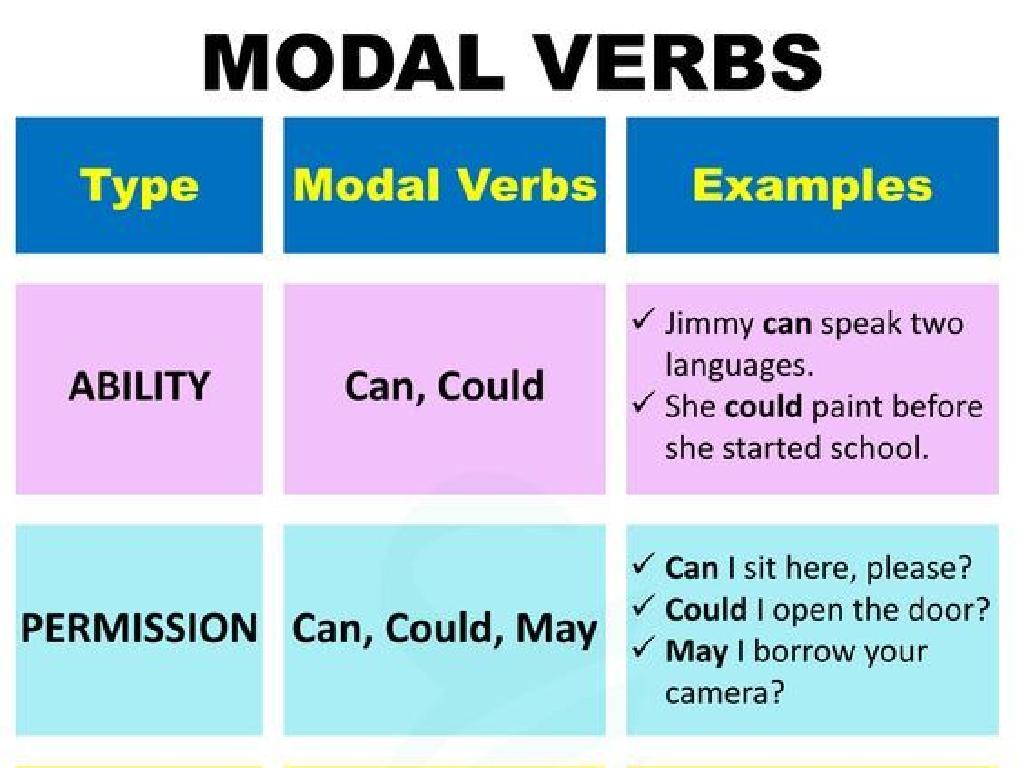Read Sight Words Set 10: Brown, Does, Eat, Must, Went
Subject: Language arts
Grade: Kindergarten
Topic: Sight Words
Please LOG IN to download the presentation. Access is available to registered users only.
View More Content
Welcome to Sight Words!
– Sight words are special words
– Words like ‘the’, ‘and’, ‘it’ are sight words
– We see them often in reading
– ‘brown’, ‘does’, ‘eat’, ‘must’, ‘went’ are our new sight words
– Learn by looking and remembering
– Use flashcards and games to memorize
– No sounding out needed
|
This slide introduces kindergarteners to the concept of sight words, which are commonly encountered in texts and are essential for reading fluency. Sight words are typically high-frequency words that don’t follow standard phonetic rules and are best learned through visual memory. Emphasize the importance of recognizing these words on sight to enhance reading comprehension and speed. Provide examples of sight words and encourage students to remember them as whole words rather than trying to sound them out. Incorporate interactive activities like flashcards and matching games to make the learning process enjoyable and effective.
Meet Our New Sight Words Friends!
– Introducing ‘brown’, ‘does’, ‘eat’, ‘must’, ‘went’
– Each word on a colorful card
– ‘brown’ on a brown card, ‘does’ on a pink card, etc.
– Words have friendly characters
– Maybe ‘brown’ is a bear, ‘eat’ is a hungry rabbit
– We’ll repeat the words as a class
|
This slide is designed to introduce Kindergarten students to a new set of sight words. Each word is presented on a card with a unique color to help with visual memory. Additionally, each word is associated with a character that embodies the word, making it more relatable and easier to remember for young learners. For example, the word ‘brown’ could be represented by a friendly bear, and ‘eat’ could be shown with a hungry rabbit. Engage the class by repeating the words in unison to reinforce pronunciation and recognition. This activity will help students become familiar with these common words, aiding in their reading fluency.
Sight Word: ‘Brown’
– ‘Brown’ is a sight word
– It’s the color of chocolate
– Like chocolate, bears, or tree bark
– Find something brown in class
– Look around the room for brown objects
– Let’s say ‘brown’ together
– Practice makes perfect! Repeat after me: ‘brown’
|
This slide introduces the sight word ‘brown’ to Kindergarten students, associating it with familiar brown objects like chocolate. Encourage the children to look around the classroom to find items that are brown, which helps them connect the word to the real world. Engage the class by saying the word ‘brown’ together, reinforcing pronunciation and recognition. This interactive approach aids in memorizing the sight word through visual and auditory repetition. For students who struggle, provide additional examples and practice opportunities.
Learning the Sight Word: ‘does’
– The word is ‘does’
– Example: ‘What does the dog say?’
– ‘does’ is used when asking about actions
– Let’s make a sentence with ‘does’
– Use ‘does’ to ask about someone’s actions
– Say ‘does’ with me
– Practice pronunciation together
|
Introduce the sight word ‘does’ to the students, emphasizing the pronunciation and its use in questions. Use a familiar question involving animals, which children love, to illustrate its use. Engage the students by asking them to make their own sentences using ‘does’, which will help them understand how it’s used in everyday language. Encourage them to repeat the word after you to practice pronunciation. This interactive approach helps with memorization and understanding of the sight word.
Sight Word: ‘Eat’
– ‘Eat’ relates to food
– Think of times we eat, like meals
– Discuss favorite foods
– Share with the class what you enjoy eating
– Everyone say ‘eat’ together
– Repeat the word ‘eat’ as a group to remember it
– Practice using ‘eat’ in a sentence
– Use ‘eat’ when talking about meals
|
This slide focuses on the sight word ‘eat’, which is associated with food and meals. Start by explaining the word and its context, such as eating lunch. Engage the students by asking them about their favorite foods to eat, which will make the learning process interactive and relatable. Have the whole class say ‘eat’ together to reinforce pronunciation and recognition. Finally, encourage the children to practice using the word ‘eat’ in sentences, possibly describing what they like to eat for different meals. This activity will help solidify their understanding of the word through repetition and practical application.
Learning the Sight Word: ‘Must’
– ‘Must’ means it’s important
– Use ‘must’ for important actions
– Example: ‘We must wash hands’
– Before eating, it’s a must to be clean
– Saying ‘must’ together
– Practice makes perfect! Let’s all repeat ‘must’
|
The word ‘must’ is a modal verb often used to express necessity or strong recommendation. In this slide, we introduce the word ‘must’ to the students, explaining its use through a relatable example of hygiene. Emphasize the importance of the word by associating it with daily routines that the children are familiar with. Encourage the students to say ‘must’ aloud as a class to reinforce pronunciation and recognition. This interactive approach helps students to remember the word and its context. As an activity, ask the students to think of other actions where ‘must’ might apply, like ‘We must tie our shoes’ or ‘We must listen to the teacher.’
Sight Word: ‘Went’
– ‘Went’ means to go somewhere
– Example: ‘I went to the park’
– Use ‘went’ to talk about places you visited
– Share where you ‘went’ this weekend
– Think of a place you visited recently and how you used ‘went’
|
The word ‘went’ is a past tense verb that we use to describe an action of going somewhere in the past. It’s important for students to recognize and use this word correctly to talk about their experiences. Start by explaining the meaning and providing a clear example. Then, engage the students by asking them to share their own experiences using the word ‘went’. This will help them understand the word in context and remember it better. For the activity, encourage students to speak in complete sentences and provide assistance with sentence structure if needed. This interactive approach will make the learning process enjoyable and memorable for the students.
Let’s Practice Writing Sight Words!
– Practice writing new sight words
– Use your whiteboard for writing
– Write ‘brown’, ‘does’, ‘eat’, ‘must’, ‘went’
– It’s okay to make mistakes
– Erase and try again if needed
– Always do your best
– Practice makes perfect!
|
This slide is for a classroom activity where students will practice writing the sight words ‘brown’, ‘does’, ‘eat’, ‘must’, ‘went’ on their whiteboards. Encourage the students to write each word clearly and remind them that making mistakes is a part of learning. If they make a mistake, they can simply erase it and try again. The goal is to build their confidence in writing and recognizing these words. For the teacher: Prepare to walk around the classroom to assist students who may need help and offer positive reinforcement. You can also suggest that students draw a picture next to the word that represents its meaning, or use the word in a simple sentence to further reinforce their understanding.
Fun Game: Word Hunt
– Let’s hunt for words in class
– Match objects to sight words
– Find something ‘brown’ or someone ‘eating’
– Show and tell what you find
– Share with the class the object you found
– Practice saying words aloud
– Helps with word recognition and pronunciation
|
This interactive activity is designed to help Kindergarten students recognize and pronounce sight words by associating them with objects or pictures in the classroom. Encourage the children to search for items that are brown, or images of someone eating, etc., and relate them to the sight words ‘brown’, ‘eat’, and the others. When a student finds a match, they should show the item to their classmates and clearly say the word. This reinforces their understanding through visual association and peer learning. For the teacher: prepare the classroom with easily identifiable items or pictures related to the sight words, ensure every student has a chance to participate, and provide guidance and positive reinforcement throughout the activity.
Class Activity: Sight Word Bingo!
– Play Sight Word Bingo
– Cover words with markers
– Use anything as markers: buttons, coins, etc.
– Shout ‘Bingo!’ when all covered
– Winner covers all sight words
|
This interactive activity is designed to help Kindergarten students recognize and read sight words from set 10: brown, does, eat, must, went. Prepare bingo cards with these sight words and distribute them to the students along with markers. Explain the rules clearly, demonstrating how to cover the words when they are called out. Encourage students to focus and find the words quickly. Celebrate the winners and encourage the others to keep trying. Possible variations of the game could include: 1) Reverse Bingo – the last to cover all wins, 2) Shape Bingo – cover words forming a shape, 3) Team Bingo – work in pairs, 4) Fill the Card – cover all words, not just a row, 5) Rhyme Time – say a word that rhymes instead of the actual sight word.
Review and Goodbye: Sight Words Set 10
– Excellent work on sight words!
– Can you recall the words we learned?
– brown, does, eat, must, went
– Practice these words at home
– Use flashcards or write them in a sentence
– Excited for more sight words?
|
Today’s class was focused on sight words set 10: brown, does, eat, must, went. Reinforce the students’ learning by praising their efforts and encouraging them to remember the words. Ask them to practice at home by using flashcards or by incorporating the words into sentences, which will help solidify their understanding. Prepare them for the excitement of learning more sight words in the upcoming classes. This will help build their vocabulary and reading skills. Remember to send home a list of the words for parents to help with practice.






